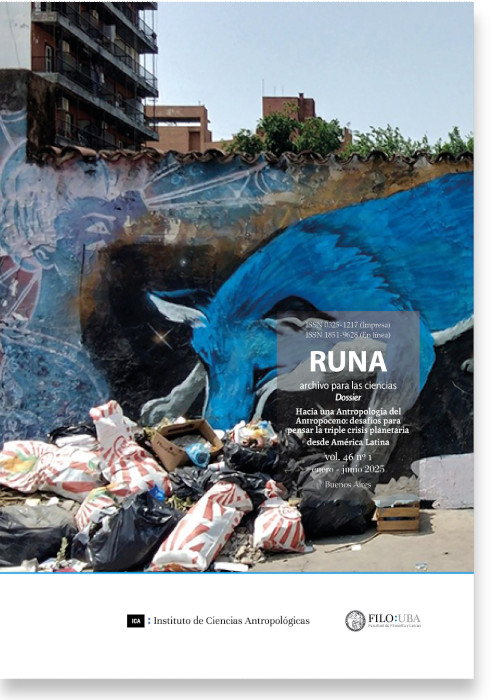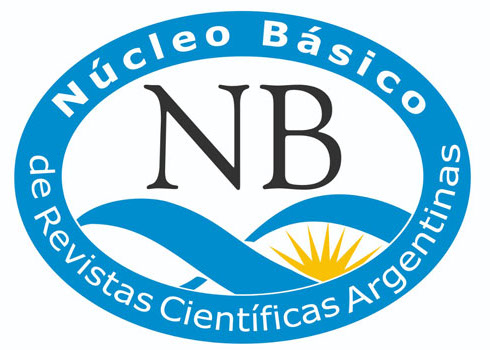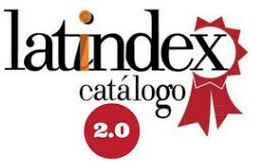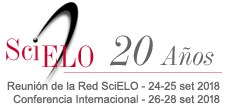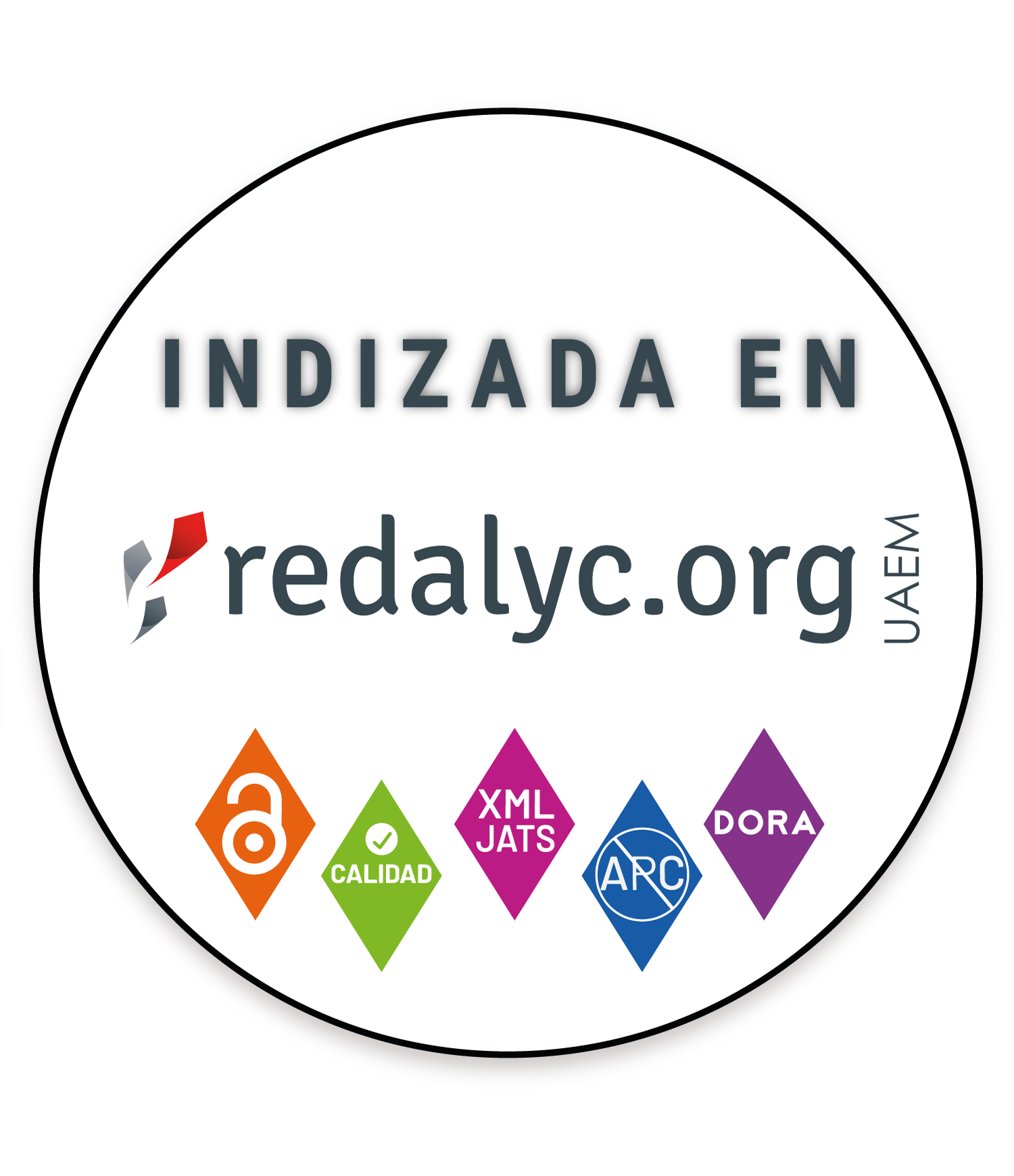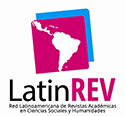The conflict and the community in the unpopulated andes
The case of the Pueblo de Parinacota, northern Chile
Abstract
In this article, we present a description of how conflicts over the management of community property in the indigenous territories of northern Chile. Based on a case study of the Pueblo de Parinacota, an Aymara settlement located in the highlands of the Arica, we contrast primary and secondary information recorded in the network of community members settled in the local territory and the city of Arica through a multi-situated ethnography. As a result, from the description of two public-private investment milestones in the territory, such as the Church and the Maracanã Stadium, we explore the visions, discursivities, and practices that account for how the Indigenous community and external agents (public, private, and civil society) have interacted around the mitigation of local depopulation.Downloads
References
Abercrombie, T. A. (1990). Ethnogenèsis et domination coloniale. Journal de la Société des Américanistes, 76, 95-104.
Abercrombie, T. A. (2006). Caminos de la memoria y del poder. Etnografía e historia en una comunidad andina. La Paz: Instituto de Estudios Bolivianos, Instituto Francés de Estudios Andinos, y Agencia Sueca de Desarrollo Internacional.
Altman, D., Flavin, P. y Radcliff, B. (2017). Democratic Institutions and Subjective Well-Being. Political Studies, 65(3), 685-704. doi: 10.1177/0032321716683203
Alvarado, L. (1970). La vida rural en el Altiplano chileno. Santiago de Chile: Instituto de Capacitación e Investigación en Reforma Agraria.
Arévalo, P. y Véliz, L. (2010). De cazadores recolectores al pueblo aymara. Historia didáctica andina regional. Arica: LOM Ediciones.
Arguedas, J. M. (1987). Las comunidades de España y del Perú. Madrid: Ediciones Cultura Hispánica.
Augé, M. (1975). Filiation, consanguinité, alliance. En M. Augé (Ed.), Les domaines de la parenté. Filiation, alliance, résidence (pp. 11-57). Paris: François Maspero.
Bähr, J. (1985). Agriculture, copper mining, and migration in the Andean Cordillera of Northern Chile. Mountain Research and Development, 5(3), 279-290.
Beach, D. y Larsson, S. (2022). On Developments in Ethnographic Research: The Case of Two Swedish Universities. International Journal of Qualitative Methods, 21, 1-10. doi: 10.1177/16094069221084432
Bensa, A. (2003). L`exclu de la famille. La parenté selon Pierre Bourdieu. Actes de la Recherche en Sciences Sociales, 150, 19-26.
Berg, H. v. d. (1989). La tierra no da así no más. Los ritos agrícolas en la religión de los aymara-cristianos. Países Bajos/The Netherlands: CEDLA Latin America Studies.
Bernhardson, W. (1985a). Tierra, trabajo y ganadería indígena en la economía regional de Arica. Chungará, Revista de Antropología Chilena, 15, 151-167.
Bernhardson, W. (1985b). El desarrollo de recursos hidrológicos del altiplano ariqueño y su impacto sobre la economía ganadera de la zona. Chungara, Revista de Antropología Chilena, 14, 169-181.
Boccara, G. B. y Ayala, P. (2012). Patrimonializar al indígena. Imaginario del multiculturalismo neoliberal en Chile. Cahiers des Amériques Latines, 67, 207-227.
Bonfil-Batalla, G. (1988). La teoría del control cultural en el estudio de procesos étnicos. Anuário Antropológico, 86, 13-53.
Bourdieu, P. (2006). A distinção. Critica social do julgamento. Porto Alegre: Editora Zouk.
Caqueo-Urizar, A., Flores, J., Mena-Chamorro, P., Urzua, A., e Irarrazaval, M. (2021). Ethnic identity and life satisfaction in indigenous adolescents: The mediating role of resilience. Children and Youth Services Review, 120, 9. doi: 10.1016/j.childyouth.2020.105812
Carrasco, A. M. (1994). Mujeres aymaras y trabajo remunerado. Temas Regionales, 1(1), 30-41.
Carsten, J. (1995). Introduction: about the House-Lévi-Strauss and beyond. En J. Carsten y S. Hugh-Jones (Eds.), About the house. Lévi-Strauss and beyond (pp. 1-46). Cambridge: Cambridge University Press.
Carsten, J. (2000). Introduction: cultures of relatedness. En Carsten, J. (Ed.), Cultures of relatedness. New approaches to the study of kinship (pp. 1-36). Cambridge: Cambridge University Press.
Castro, M., Veloso, A. y Bustos, E. (1981). The Chilean Altiplano: Natural environment and socio-cultural traits of the Aymara population. Paper presentado al The Theme 5: Use of Scientific information for environment education. Ecology in practice. Establishing a scientific basis for land management. 22-29 de septiembre, París.
Cerna, C., Samit, S. y Véliz, L. (2018). Alteridades, intercambio y marchantes en Codpa, extremo norte de Chile, mediados del siglo XX. Antípoda. Revista de Antropología y Arqueología, 32, 125-146. doi: http://dx.doi.org/10.7440/antipoda32.2018.06
Del Molino, S. (2016). La España vacía. Viaje por un país que nunca fue. Madrid: Turner Noema.
Dougnac, F. (1975). La legislación aplicable a los indígenas del norte de Chile. Norte Grande, I(3-4), 437-444.
Escobar, A. (1995). Encountering development. Making and unmaking of the Third World. Princeton: Princeton University Press.
Esping-Andersen, G. (1990). The three Worlds of Welfare. New Jersey: Princeton University Press.
Esping-Andersen, G., Gallie, D., Hernerijck, A., & Myles, J. (2002). Why we need a new Welfare State. Oxford: Oxford University Press.
Evans-Pritchard, E. E. (1940). The Nuer. A description of the modes of livelihood and political institutions of a Neolithic people. New York y Oxford: Oxford University Press.
Galdames, L., Choque, C. y Díaz, A. (2016). De apachetas a cruces de Mayo: identidades, territorialidad y memoria en los Altos de Arica, Chile. Interciencia, 41, 526-532.
Garretón, M. A. (2003). Incomplete democracy. Political democratization in Chile and Latin America. Trads. R. K. Washbourne y G. Horvath. Chapel Hill: The University of North Carolina Press.
González, S. (2008). La llave y el candado. El conflicto entre Perú y Chile por Tacta y Arica (1883-1929). Santiago: LOM editores y Universidad de Santiago de Chile.
González, H. y Gundermann, H. (2022). La propiedad de la tierra entre los Aymara del altiplano chileno, 1880-2020. Revista de Geografía Norte Grande, 83, 67-86.
González, H. y Ruz, R. (2015). Fe en el papel: la inscripción del dominio de las tierras de la comunidad en el altiplano chileno. Diálogo Andino, 46, 143-152.
Gundermann, H. (2001). El método de los estudios de caso. En M. L. Tarrés (Ed.), Observar, escuchar y comprender. Sobre la tradición cualitativa en la investigación social (pp. 251-288). México D.F: Porrúa, FLACSO México, COLMEX.
Gundermann, H. (2018). Los pueblos originarios del norte de Chile y el Estado. Diálogo Andino, 55, 93-109.
Gundermann, H., Vergara, J. I. y González, H. (2019). The Andean Border in Northern Chile and Violence Against Indigenous Peoples in The Twentieth Century. Urban Anthropology and Studies of Cultural Systems and World Economic Development, 48(3-4), 413-480.
Hale, C. R. (2004). Rethinking Indigenous politics in the Era of the “Indio permitido”. NACLA Report on the Americas, Report on Race, Part I, 16-21.
Harris, M. (1979). Cultural Materialism: The Struggle for a Science of Culture. Nueva York: Random House.
Hidalgo, J., Marsilli, M., Santoro, C. y Correa, R. (1990). Compraventa de una hacienda en el valle de Azapa por Gaspar de Oviedo, 1661. Documento inédito del Archivo General de la Nación, Lima Perú. Diálogo Andino, 9, 84-106.
Hill, M. (2014). Implementing Public Policy. An introduction to the study of operational governance. Londrés: SAGE Publication.
Lavigne Delville, P. (2018). Land rights. En H. Callan (Ed.), The International Encyclopedia of Anthropology (pp. 1-3). New York: John Wiley & Sons, Ltd.
Lévi-Strauss, C. (1979). La voie des masques, t. I. París: Albert Skira.
Mamani M., M. (1999). Chacha-Warmi paradigma e identidad matrimonial Aymara en la provincia de Parinacota. Chungara, Revista de Antropología Chilena, 31(2), 307-317.
Mauss, M. (2009). Ensayo sobre el don. Forma y función del intercambio en las sociedades arcaicas. Trad. J. Bucci. Buenos Aires: Katz.
Muñoz, I. (2020). Paisaje cultural y vialidad en la Puna del extremo norte de Chile: el caso del asentamiento pueblo viejo de Parinacota y su conexión con asentamientos Carangas e Incas al otro lado de la Cordillera. Chungara, Revista de Antropología Chilena, 52(3), 461-484.
Ohrens, O., Treves, A. y Bonacic, C. (2016). Relationship between rural depopulation and puma-human conflict in the high Andes of Chile. Environmental Conservation, 43(1), 24-33. doi: 10.1017/s0376892915000259
Ostrom, E. (1993). A communitarian approach to local governance. National Civic Review, 82(3), 226-233. doi: https://doi.org/10.1002/ncr.4100820305
Paerregaard, K. (2011). Globalizing Andean Society: Migration and change in Peru`s Peasant Communities. En T. Greaves, R. Bolton y F. Zapata (Eds.), Vicos and beyond. A half Century of Applying Anthropology in Peru (pp. 195-213). Lanham: Altamira Press.
Poole, D. (2008). Introduction. En Poole, D. (Ed.), A companion to Latin American Anthropology (pp. 1-7). Malden: Blackwell Publishing.
Ragin, C. C. (2007). La construcción de la investigación social. Introducción a los métodos y su diversidad. Bogotá: Siglo del Hombre Editores.
Recaño, J. (2017). La sostenibilidad demográfica de la España vacía. Perspectives Demogràfiques, 007, 1-4.
Rivière, G. (1982). Sabaya: Structures socio-économiques et représentations symboliques dans le Carangas, Bolivie. Thèses 3ème cycle Ethnol (Doctorant). École de Hautes Études de Sciences Sociales, París.
Sahlins, M. (2011). What Kinship is (part two). Journal of the Royal Anthropological Institute, 17, 227-242.
Starn, O. (1994). Rethinking the Politics of Anthropology: The Case of the Andes [and Comments and Reply]. Current Anthropology, 35(1), 13-38.
Tabilo, K. S. (2004). El debate Estado versus etnia respecto a la propiedad de la tierra. El caso del Parque Nacional Lauca en Parinacota, norte de Chile. Paper presentado al V Congreso Chileno de Antropología, San Felipe.
Tönnies, F. (2001). Community and Civil Society. Cambridge: Cambridge University Press.
Tudela, P. (1994). Chilenización y cambio ideológico entre los aymaras de Arica (1883-1930) intervención religiosa y secularización. Revista Chilena de Antropología, 12, 201-231.
Turner, V. W. (1975). Symbolic Studies. Annual Review of Anthropology, 4, 145-161.
Uribe-Sierra, S. E., Mansilla-Quiñones, P. y Mora-Rojas, A. I. (2022). Latent Rural Depopulation in Latin American Open-Pit Mining Scenarios. Land, 11(8), 23. doi: 10.3390/land11081342
Waisman, M. A., Albertí, A. V. y Rispoli, M. F. (2022). Estrategias conceptuales en el abordaje de la alteridad. En M. C. Salva (Ed.), Antropología social. Contribuciones al diálogo de saberes (pp. 44-73). Buenos Aires: Universidad Nacional de La Plata.
Weber, M. (2002). Comunidades étnicas. En Economía y sociedad (pp. 315-327). México D.F: Fondo de Cultura Económica.
Copyright (c) 2025 Cristhian Cerna, Marco Alejandro Alfaro Alfaro

This work is licensed under a Creative Commons Attribution 4.0 International License.

Runa, archivos para las ciencias is a publication of the Instituto de Ciencias Antropológicas, Facultad de Filosofía y Letras, Universidad de Buenos Aires and is distributed under a Creative Commons Attribution 4.0 International License.
Runa maintains its commitment to the policies of Open Access to scientific information, considering that both scientific publications and publicly funded research should circulate on the Internet freely, free of charge and without restrictions.
The contents and opinions expressed in published articles are the sole responsibility of their authors.
